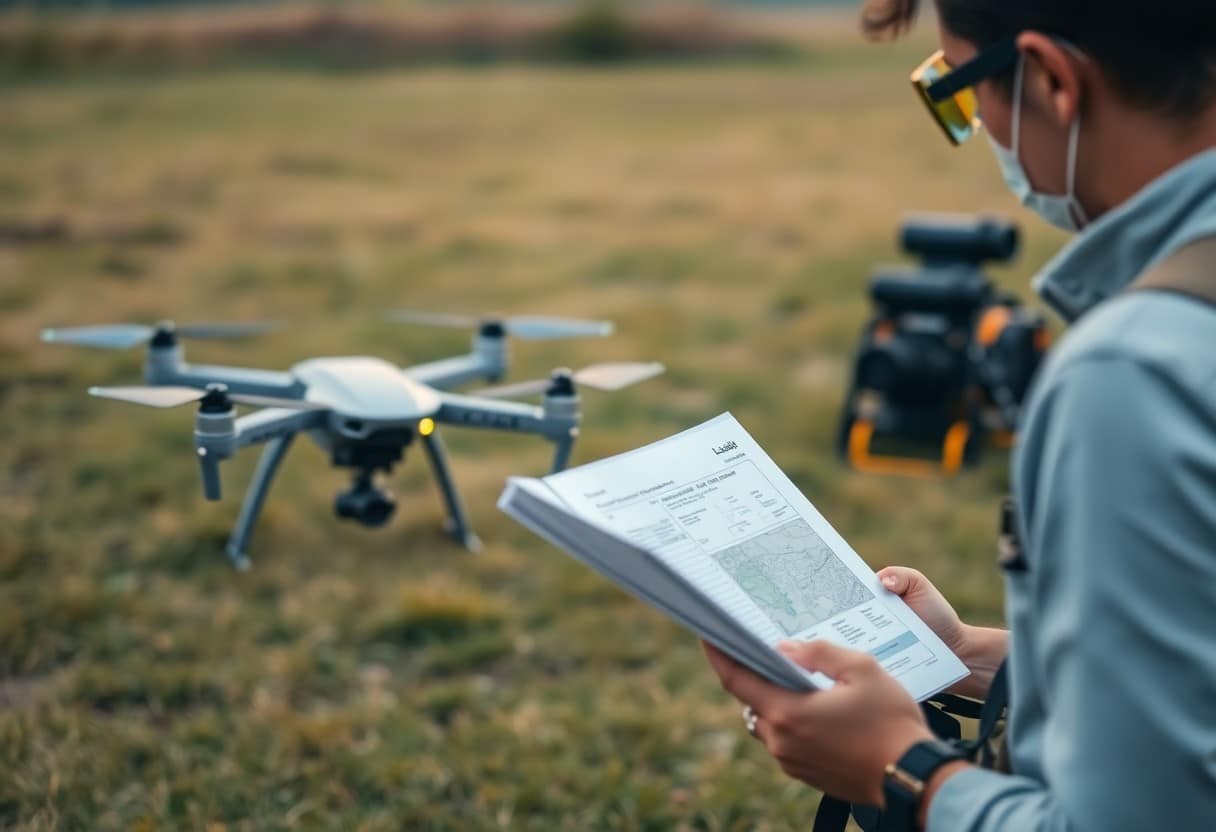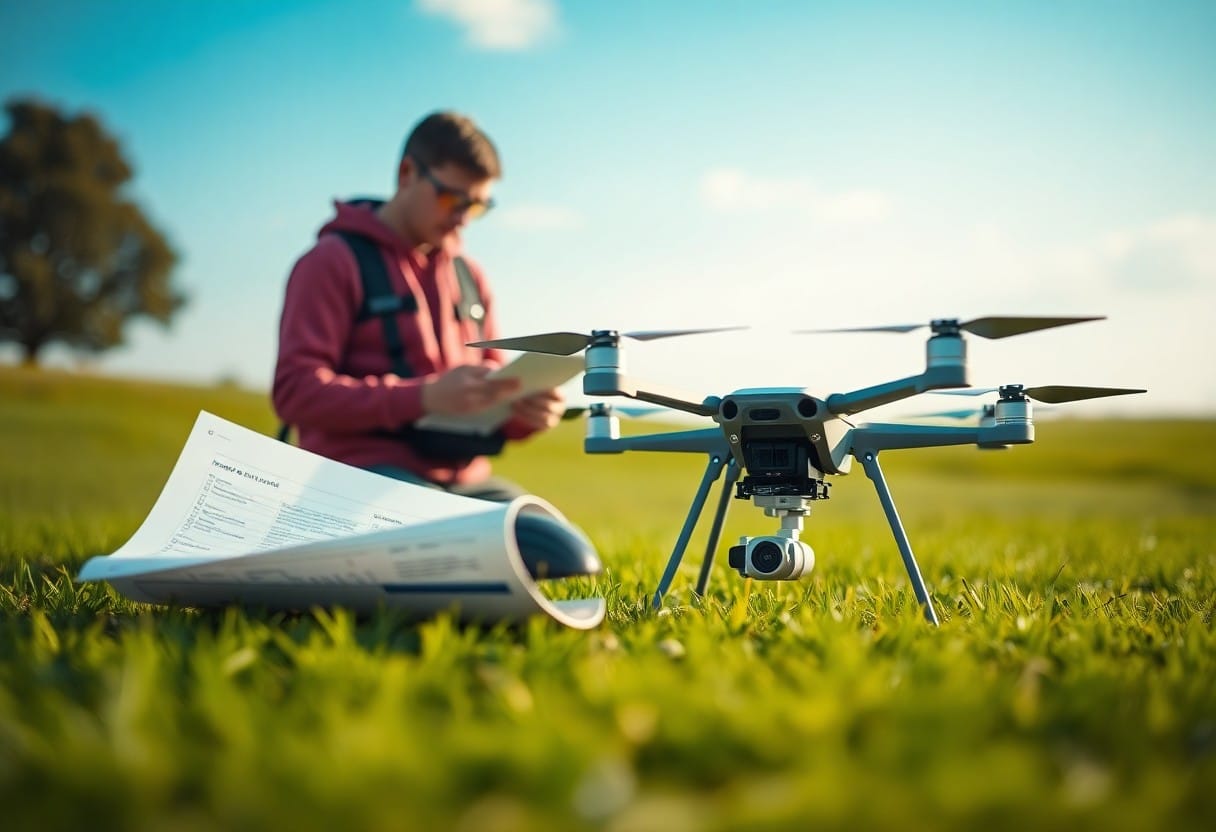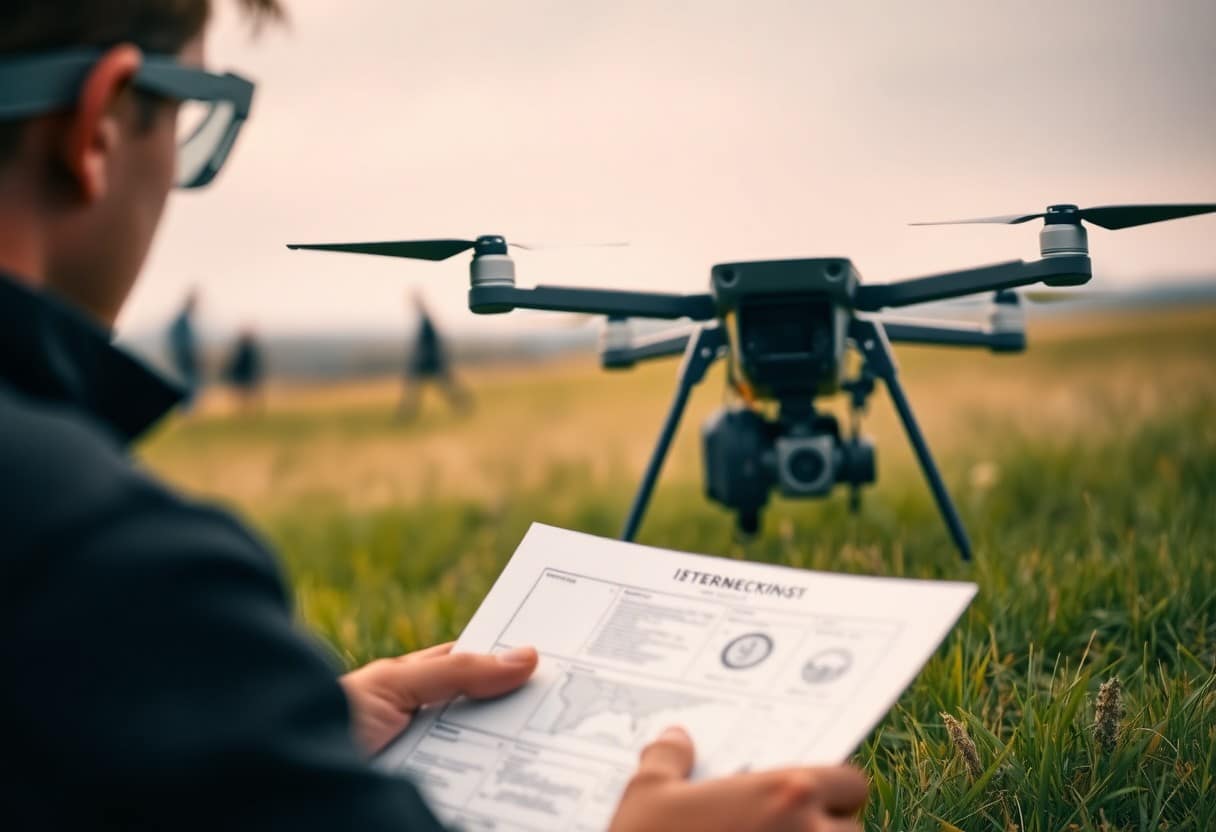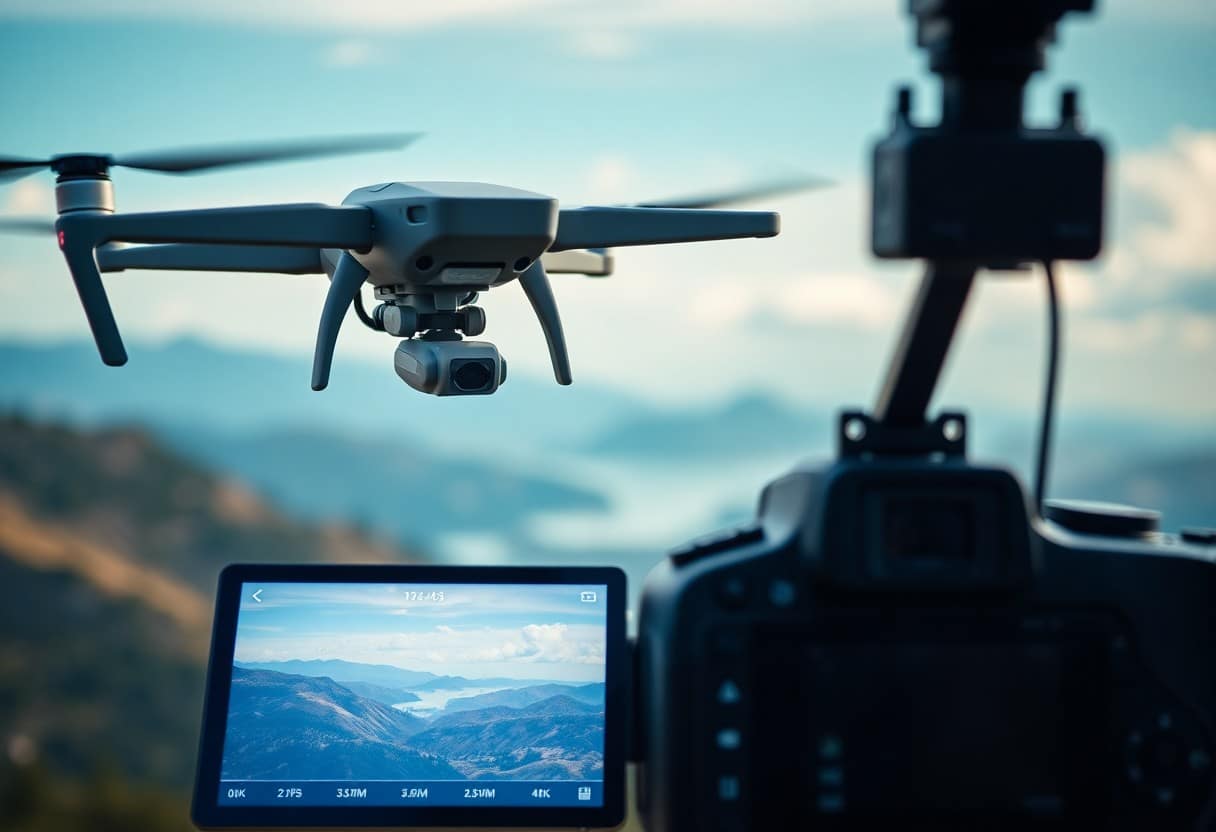8 Steps to a Comprehensive Risk Assessment Before Flying a Drone
Before flying the drone, conduct a comprehensiveRisk AssessmentIt's vital. This not only helps to ensure that yoursuretyIt's not just for the sake of protecting others.suretyand comply with relevant laws and regulations. Through the followingEight StepsBy doing so, you will be able to systematically identify and assess potential risks and enhance your reputation and the effectiveness of your drone use. This article will guide you so that you are well prepared before you fly.
Summary of key points:
- Understanding regulations:Before flying a drone, you need to fully understand the laws and regulations of your location to ensure compliance.
- Risk identification:Recognize potential risks, including environmental factors, terrain, and other aircraft.
- Assess the risk:Assess the likelihood and potential impact of identified risks to determine their severity.
- Develop a plan:Based on the results of the risk assessment, a response plan is developed to minimize the risk.
- Implement control measures:Implement necessary control measures to minimize risk before flight.
- Continuous monitoring:During flight, the environment and the status of the aircraft are continuously monitored for timely adjustments.
- Record and Reflect:At the end of the flight, the flight data and experience are recorded to improve the risk assessment process in the future.

Understanding Risk Assessment
Risk assessment is a systematic process designed to identify and analyze the various hazards and threats that may arise when operating a drone. Through these assessments, you can develop effective management measures to reduce these risks. It's not just a regulation, it's a necessary step to ensure your flight safety.
Definition of Risk Assessment
Risk assessment is the process of identifying, analyzing and evaluating the potential for damage or loss that may result from an event. In drone operations, this includes a wide range of risks such as technical failures, human error and external environmental factors.
Importance in Drone Operations
Risk assessment is essential for drone operations as it helps you to anticipate and manage potential hazards. Through effective risk assessment, you can improve flight safety, avoid major accidents and ensure that your operations comply with applicable laws and regulations.
Risk assessment in drone operationssignificanceIt's not something to be underestimated. Not only does it keep you and others safe, but it also reduces the risk ofHuge LossesThe risk of accidents. By implementing a standardized assessment process, you can respond more effectively to possible challenges and crises and strengthen your position in the industry.Professional Image. It is the responsibility of every drone operator to ensure that a detailed risk assessment is carried out before every flight. By doing so, you will not only improveoperating efficiencyIt also establishes the protection of one's own life and the lives of others.
Identify potential risks
Before flying your drone, you need to fully identify potential risks. This goes beyond reviewing your drone's operator's manual and carefully considers the various factors that could affect your safe flight. Learn moreFrom Concept to Reality - 10 Essential Steps for 3D Design ProgramsThis will help you develop specific strategies for action during the process.
Environmental Risks
Environmental risks include factors such as weather conditions, terrain obstructions, and the density of people in the vicinity. Adverse weather conditions, such as high winds or rainfall, may challenge the control of the drone. Therefore, it is important to carefully assess the effects of climate change and obstacles in your environment before flying.
Technology Risk
Technical risks relate primarily to the performance and technical condition of your drone. If the drone's battery life is insufficient, the engine malfunctions, or the control system becomes faulty, these could result in aSerious Flight Accidents. You need to check your device regularly to ensure that it is functioning properly and keep its software and firmware up to date.
For example.Battery StatusIt is a key factor in flight safety. You need to check your batteries for expansion, leaks, etc. and make sure they are charged to safe standards. If you find any abnormalities, replace them immediately. In addition, your drone's control system must be well inspected before flight. By taking these measures, you can greatly reduce the risk of accidents caused by technical problems.
Assessing Risk Severity
Before flying your drone, you need to conduct a thorough risk assessment, which includes evaluating the severity of each risk. This means carefully considering the likelihood of each risk occurring and its potential impact, so you can develop an effective response strategy. Categorizing each risk will help you prioritize the issues of greatest concern and ensure the safety of your flight operations.
Possibility of occurrence
Risk AssessmentPossibility of occurrenceIt's critical. You need to determine the likelihood of a particular threat occurring during a flight so that you can target and mitigate those high-risk situations. By collecting data and past cases, you can more accurately predict the incidence of potential risks.
Impact Analysis
Further analysis of the risk ofImpactThis will help you understand what the consequences would be if these risks were to occur. This includes not only damage to the drone itself, but also the potential impact on the surrounding environment, the safety of personnel and legal consequences. This analysis gives you a complete picture of the extent to which different risks threaten your flight program.
existImpact AnalysisIt is important to consider the possible consequences of different risks. These consequences are not limited to physical damage, but may include legal liability, loss of money and damage to the image of the business. Make sure you understand the potential impact of each risk so that you can target the most significant threats. For example, a drone crash could pose an immediate danger to the safety of people, along with legal enforcement or fines. Understanding theseDangerousFactors that can help you make informed decisions and take precautions while flying.

Developing a Risk Mitigation Plan
Before flying a drone, you need to develop a thorough risk mitigation plan to identify and reduce potential risks. This means that you need to analyze in detail the possible hazards that may arise and establish appropriate countermeasures. The plan should include clear guidelines to help you respond quickly and effectively to unexpected events.
Risk Reduction Strategies
To minimize your risk, you can adopt various strategies such as regular drone maintenance, ensuring you fly in a safe environment and using the latest aerial photography technology. You should also keep your flight permits and insurance up to date to avoid unnecessary legal issues.
Emergency Preparedness
Your emergency preparedness program is critical to respond to unforeseen situations that may occur. Ensure that you have the necessary emergency tools and resources, and conduct regular simulation drills to improve your ability to respond to emergencies.
Prior to the drone flight.Adequate Emergency Preparednesscan help you protect yourself and your equipment in the event of danger. You should make an emergency contact list and have the necessary tools such as first aid kits and field communication equipment available. In addition, you shouldFamiliarize yourself with the rescue facilities in the flying areaLocation can speed up the rescue process. It is recommended that you carry out regular drills to ensure that all relevant personnel know what to do, so that you will be more comfortable in a real emergency.

Enforcement of safety regulations
Before flying the drone, you mustEnforcement of strict safety regulationsThis includes knowing and following local laws and regulations and making sure you have the most up-to-date information. This includes knowing and following local laws and regulations, as well as making sure you have the most up-to-dateGuiding Principles and Best Practices for Drone SafetyFor more information, you can refer to For more information, you can refer toBasic Steps for Battery Management in Drone FlightThe
Pre-flight checklist
Before each flight, you should use thePre-flight checklistMake sure that everything is running properly on your drone. It is essential to check the battery level, that the propeller is securely installed, and that the drone's software is up-to-date.
Training and Certification
Have the rightTraining and CertificationIt's important to stay safe. Consider taking a professional drone operator training course, which will help you understand how to properly operate a drone and acquire the skills to respond to potential crises.
Training not only improves your maneuvering skills, but also gives you the practical knowledge you need to meet the challenges of flying. ByOfficial CertificatesYou will be able to fly a drone legally, which is a very important step for your future drone operations. Continuously updating your skills and knowledge will increase your confidence in flying while maintaining safety.
Monitoring and Reviewing Risks
While flying the drone, you must periodicallymonitorrespond in singingReviewRisks to ensure safe operation. Establishing a systematic risk checking process and continuous observation of risk factors can help you identify potential hazards in a timely manner. For more information, please refer toAs a beginner, what are the key drone flying techniques that would enhance your skills?
Continuous Assessment
Continuous assessment is an integral part of drone operations. You need to constantly assess changes in the operating environment and their impact on safety, such as weather conditions and the people around you. Stay alert before, during and even after the flight to recognize new risk factors.
Papers and Reports
To better manage risk, you should conduct a detailed review of the results of all inspections and assessments.Recordsrespond in singingReportThis will help you review your operational history and provide you with a basis for future flights and suggestions for improvement. This will help you review your operational history and provide you with a basis for future flights and suggestions for improvement.
During the documentation and reporting process, you need to ensure that all data and observations are properly recorded, which not only helps to evaluate past risk decisions, but also provides an important reference point for future drone flights. During this process, it should be emphasized that you will be able to identify potential problems faster and make timely adjustments to your program to enhance overall safety.
8 Steps to a Comprehensive Risk Assessment Before Flying a Drone
Before flying a drone, you must conduct a thorough risk assessment to ensure safety and compliance. These 8 steps will not only help you identify potential risks, but also enable you to develop an effective response strategy. By carefully examining the terrain, climate and mechanical conditions, you can reduce the likelihood of unforeseen events. Remember, only with adequate preparation can you enjoy the fun and flexibility of flying a drone with confidence.
Frequently Asked Questions
Q: What are the 8 steps to conducting a comprehensive risk assessment before flying a drone?
A: These 8 steps include: 1) identify the flight location, 2) assess the environmental risks, 3) check the weather conditions, 4) confirm the technical status of the drone, 5) understand the local laws and regulations, 6) assess the potential obstacles, 7) formulate a contingency plan, and 8) write a risk assessment report.
Q: Why is it necessary to assess environmental risks?
A: Environmental risk assessment helps to identify natural and man-made factors that may interfere with drone flight, such as trees, buildings and power lines, to reduce the probability of accidents.
Q: How do I check weather conditions to ensure safe flight?
A: Check the current and forecast wind speed, rainfall, visibility and other meteorological factors, and consider postponing the flight plan if there is any unfavorable weather.
Q: How do I verify the technical status of my drone?
A: Test drone battery power, propeller integrity, and sensor function to ensure all equipment is operating properly and to prevent technical failures.
Q: What is the importance of local laws and regulations?
A: Ensure that you comply with local laws and drone flight regulations, including restricted areas and required permits, to avoid legal disputes and fines.
Q: How do I assess potential obstacles?
A: Before flying, conduct a careful inspection of the flight path and use a map or altitude chart to identify all possible obstacles such as buildings, trees, and other UAVs.
Q: How should I develop an emergency plan?
A: The contingency plan should include steps on how to respond in the event of a loss of control or malfunction, such as setting up a safe landing point and ways to contact emergency services.




